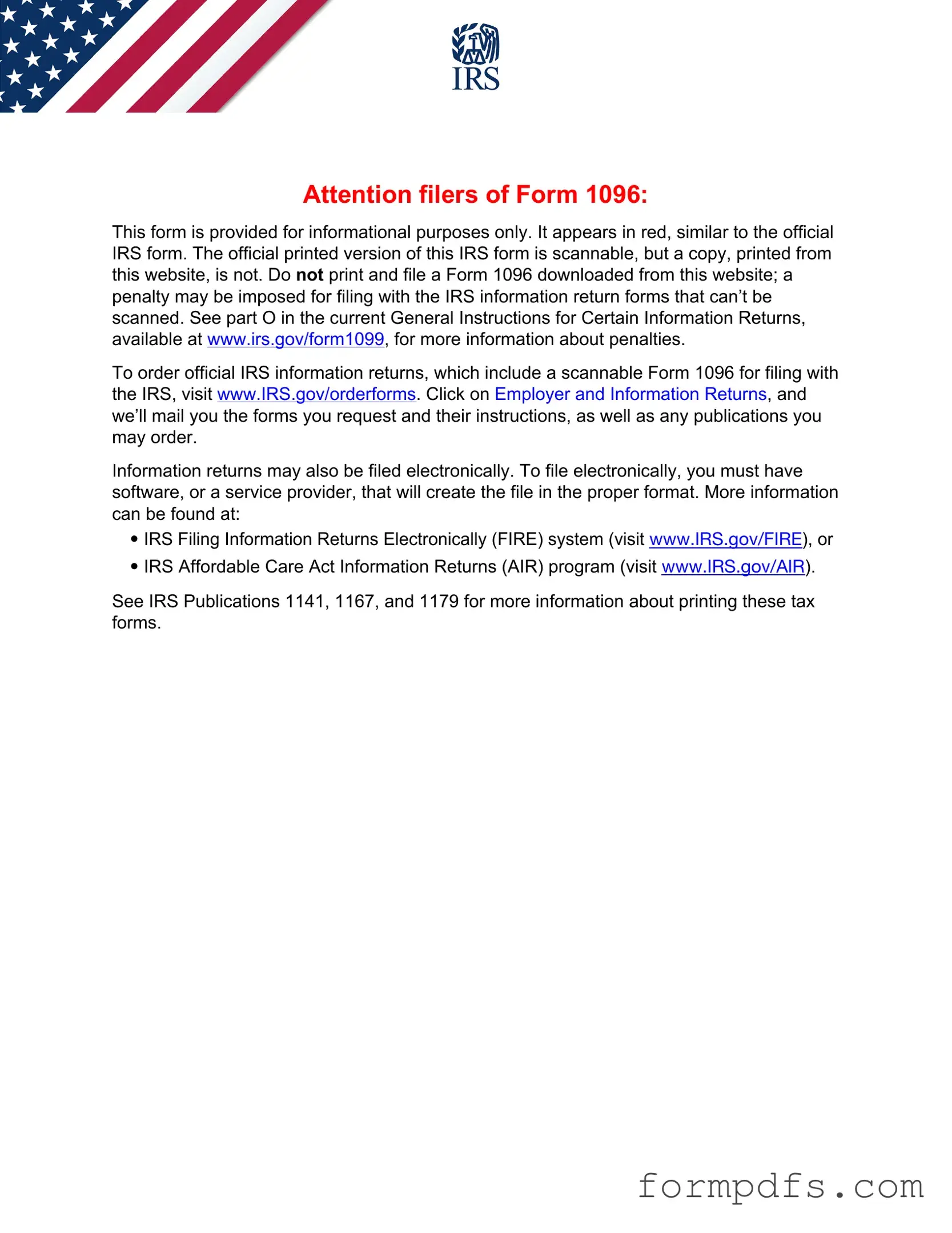What is the IRS 1096 form?
The IRS 1096 form is a summary form that accompanies various types of information returns, such as Forms 1099, 1098, and W-2G. It is used to report the total number of forms being submitted to the IRS. Essentially, it acts as a cover sheet for these returns, providing essential information about the filer and the types of forms being reported.
Who needs to file Form 1096?
Any business or individual who submits paper versions of certain information returns to the IRS must file Form 1096. This includes those who are reporting payments made to independent contractors, interest payments, and other types of income. If you are filing electronically, you do not need to submit Form 1096.
When is Form 1096 due?
Form 1096 is due on the same date as the information returns it summarizes. For most forms, this is typically January 31 of the year following the tax year. However, if you are reporting non-employee compensation, the due date is also January 31. For other types of returns, the deadline may vary, so it is important to check the specific requirements for each form.
How do I fill out Form 1096?
Filling out Form 1096 involves providing your name, address, and taxpayer identification number. You will also need to indicate the type of forms you are submitting and the total number of forms included in the submission. Additionally, you must report the total amount of money being reported on the forms. Ensure all information is accurate to avoid issues with the IRS.
What happens if I don’t file Form 1096?
Failure to file Form 1096 when required can lead to penalties. The IRS may impose fines for late filing or for not filing the form at all. These penalties can accumulate quickly, especially if you continue to neglect this requirement over multiple tax years. It is crucial to stay compliant to avoid unnecessary financial burdens.
Can I file Form 1096 electronically?
Form 1096 cannot be filed electronically. If you are submitting information returns electronically, you do not need to file Form 1096. However, if you are submitting paper forms, you must include Form 1096 with your submission. Always ensure that your paper submissions are complete and accurate to avoid processing delays.
What should I do if I make a mistake on Form 1096?
If you discover an error after submitting Form 1096, you should correct it as soon as possible. The IRS allows you to file a corrected Form 1096. Be sure to indicate that it is a corrected form and provide the accurate information. Keeping a record of both the original and corrected forms can help clarify any discrepancies in the future.
Is there a penalty for errors on Form 1096?
Yes, penalties can apply for errors on Form 1096, particularly if the errors result in incorrect information being reported to the IRS. This can include fines for late filing or for inaccuracies in the reported totals. It is essential to review the form carefully before submission to minimize the risk of penalties.
Where can I find Form 1096?
Form 1096 can be obtained directly from the IRS website. The form is available for download in PDF format, allowing you to print it for your records. Additionally, many tax preparation software programs include Form 1096 as part of their offerings, making it easier to complete your filing accurately.
